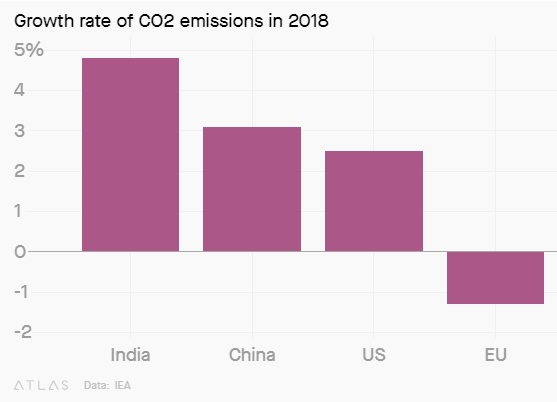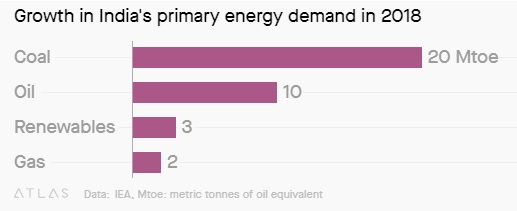IASbaba's Daily Current Affairs Analysis
IAS UPSC Prelims and Mains Exam – 27th March 2019
Archives
(PRELIMS + MAINS FOCUS)
‘Politics and Society’ Survey
In news:
- A public opinion survey in 12 States has found that political parties are the most distrusted political institutions in the country.
- The survey, Politics and Society between Elections 2019, found that political parties had a negative net trust rate of -55%. (They are the only institutions with a negative net rate.)
- Army is the most trusted institution in the country, with an effective trust rate of 88%.
- Judiciary — including the Supreme Court, High Courts and district court — enjoys an effective trust rate of more than 60%.
Do you know?
- Apart from measuring institutional trust, the survey attempts to provide a glimpse into people’s views on governance, sexuality, gender, nationalism, populism, caste and religious identities.
- One in five among those surveyed felt that unemployment was the single biggest issue facing the country today.
- Other issues cited include development, growth and poverty (15%) and law, governance and corruption (13%).
India’s carbon dioxide emissions up 5%
Part of: GS Prelims and mains III – Environment; Pollution; GHG emissions
In news:
According to a report by the Paris-based International Energy Agency (IEA) –
- India’s carbon dioxide (CO2) emissions are growing at a faster rate than in any other major energy-consuming nation.
- India emitted 2,299 million tonnes of carbon dioxide in 2018, a 4.8% rise from the previous year.
- India’s emissions growth was higher than that of the United States and China — the two biggest emitters in the world.
- But “despite this growth, per capita emissions in India remain low at only 40% of the global average,” the report adds.
- Emissions from India accounted for 7% of the global CO2 burden in 2018, compared with the US’s 14%.
- India’s higher CO2 emissions have been spurred by an increasing consumption of fossil fuels.

Do you know?
- The country has set ambitious renewable energy targets for 2022, but is likely to miss them. The vast majority of the energy that India consumes comes from fossil fuels.
- Under the Paris climate agreement, India has set a target to reduce the emissions intensity of its economy by over 30%, compared with 2005 levels, by 2030.
- But the country has continued building new coal plants, and oil imports are only rising as its growing population becomes more prosperous.
(MAINS FOCUS)
NATIONAL
TOPIC: General studies 2
- Government policies and interventions for development in various sectors and issues arising out of their design and implementation.
- Welfare schemes for vulnerable sections of the population by the Centre and States and the performance of these schemes.
Issues associated with Aadhaar Payment Bridge System (APBS)
Aadhaar Bridge Payment System (ABPS)
- Aadhaar Payment Bridge system implemented by NPCI is used by the government departments and agencies for electronic transfer of benefits and subsidiaries under Direct Benefit Transfer (DBT) scheme launched by GoI.
- Here the beneficiary is identified through an Aadhaar number, then NPCI manages an Aadhaar Mapper where the Aadhaar number is mapped to a specific bank account and the money flows to the connected bank account.
- In other words, instead of having to provide multiple account details (Name, Account number, IFSC Code etc.) to receive a bank transfer, one can only provide their Aadhaar number.
Benefits of Aadhaar Payment Bridge (APB) System
- Eliminates inordinate delays, multiple channels & paper-work involved in the existing system.
- Transfers benefits & subsidies in a seamless & timely manner and directly into the Aadhaar Enabled Bank Account.
- In case of change in bank account, customer is not required to convey the bank account details or change in bank details to the Government Department or Agency.
- Customer not required to open multiple bank accounts for receiving benefits and subsidies of various social welfare schemes – Customer just need to open one account and seed his/her Aadhaar number in the bank account to start receiving benefits and subsidies directly into his/her Aadhaar Enabled Bank Account.
Do you know?
Induction of a bank account into APBS involves two distinct steps –
- First, the account must be “seeded” with the customer’s Aadhaar number.
- Second, it must be connected to the NPCI mapper — a step known as “mapping”.
Issues/Concerns:
- Issue with ABP mapper: Under the current system, the APB sends the subsidies to the last bank account seeded with the Aadhaar. In other words, in cases of multiple accounts for the same person, the APBS automatically sends money to the latest-mapped account. (without customer’s consent)
- Haphazard seeding: Under Jan Dhan Yojana (JDY), millions of bank accounts were opened and seeded with Aadhaar in a haphazard manner. Aadhaar numbers were seeded into these accounts without proper verification. Haphazard seeding continued because the government wanted to bring all direct benefit transfer (DBT) payments — pensions, scholarships, subsidies, MGNREGA wages, and so on — under the Aadhaar payments umbrella.
- Issue of diverted payments: Bank payments were being redirected to a wrong account, without the recipient’s consent or knowledge. For example, in 2017 the nation witnessed mass diversion of LPG subsidies to Airtel wallets without seeking “informed consent” of the recipient.
- Issue with e-KYC norms: Compulsory e-KYC became a nightmare for poor people, as they did not know what they were supposed to do. Many pensioners are struggling to understand why their pension was discontinued after e-KYC was made compulsory.
- Issue of rejected payments — another nightmare for powerless DBT recipients.
- Lack of accountability – ABPS is a very opaque payment system and few people have a clear understanding of it. When people have problems of diverted or rejected payments, they have no recourse. More often than not, they are sent from one office to another.
- Problems of biometric authentication and inconsistencies between the Aadhaar database and the bank database are other issues.
Conclusion:
- The premature and coercive imposition of the APBS has resulted in increased diverted payments, which is a serious problem.
- A recent study of the Indian School of Business (ISB), on an analysis of more than 10 million payments in 2014-18, concludes that 38% of all the APBS payments of MGNREGA wages in Jharkhand “redirect wages to a completely unrelated account”.
- There is a need for reliable seeding of bank accounts with Aadhaar for APBS to work efficiently.
- An independent and participatory review of the system is long overdue.
- While Aadhaar-based payments have only added to the suffering of the labourers and Aadhaar’s implementation through fragile rural banking systems have only created commotion, it is high time that the government should see the ground realities which are clear as daylight.
Connecting the dots:
- What are the concerns being raised over Aadhaar Payment Bridge System (APBS)? Critically evaluate.
- Should Aadhaar be made compulsory for availing the benefits of government schemes? Examine in the light of the recent SC judgement in this regard.
NATIONAL/ENVIRONMENT
TOPIC: General studies 1
- Urbanization, their problems and their remedies
General studies 2 and 3
- Government policies and interventions for development in various sectors and issues arising out of their design and implementation.
- Important aspects of governance and e-governance
- Environment and Pollution; Climate Change
For carbon neutral cities
Context:
Last year 18 climate scientists released a report targeted at urban policymakers. The report was released before the UNFCCC Katowice summit.
- The report stressed on the urgency of keeping global warming to less than 1.5ºC above pre-industrial levels.
- According to the report, cities hold the key as nearly 75 per cent of the global carbon footprint is due to urban activities.
- Well-connected and pedestrian-friendly cities have a relatively low carbon footprint.
- The report recommends the use of “information and communication technologies to optimise public transportation efficiency, and enable vehicle sharing”.
- It also advocates the use of “energy-efficient buildings and infrastructure that have low or near zero-emissions”.
- All this will require cooperation between local, provincial and national governments.
Mayors of several cities promised to act on the report’s recommendations.
Copenhagen case study:
- Copenhagen (Denmark’s capital) became the first city to present a plan to cancel out its carbon footprint by 2025.
- Copenhagen has already reduced its GHG emissions by more than 40 per cent compared to 2005.
- Nearly 45 per cent of people who live in and around Copenhagen use bicycles to commute.
- The city also has specially-designated roads for cyclists and uses waste to generate electricity.
- For every unit of fossil fuel it consumes, Copenhagen plans to sell commensurate amounts of renewable energy.
Conclusion:
- Copenhagen shows how mayors, town planners and other local authorities hold the key to the success of national commitments to mitigate global warming.
- The Danish capital’s experience could hold lessons for civic authorities around the world.
Connecting the dots:
- For India to make urbanisation sustainable, it is important to empower urban local governments. Do you agree? Elucidate.
- Local governments hold the key to the success of national commitments to mitigate global warming. Do you agree? Elucidate.
MUST READ
An own goal for Britain?
If you want to help the poor
Not so basic
Tolerating the corrupt
India on the cusp of another dalliance with fiscal imprudence















